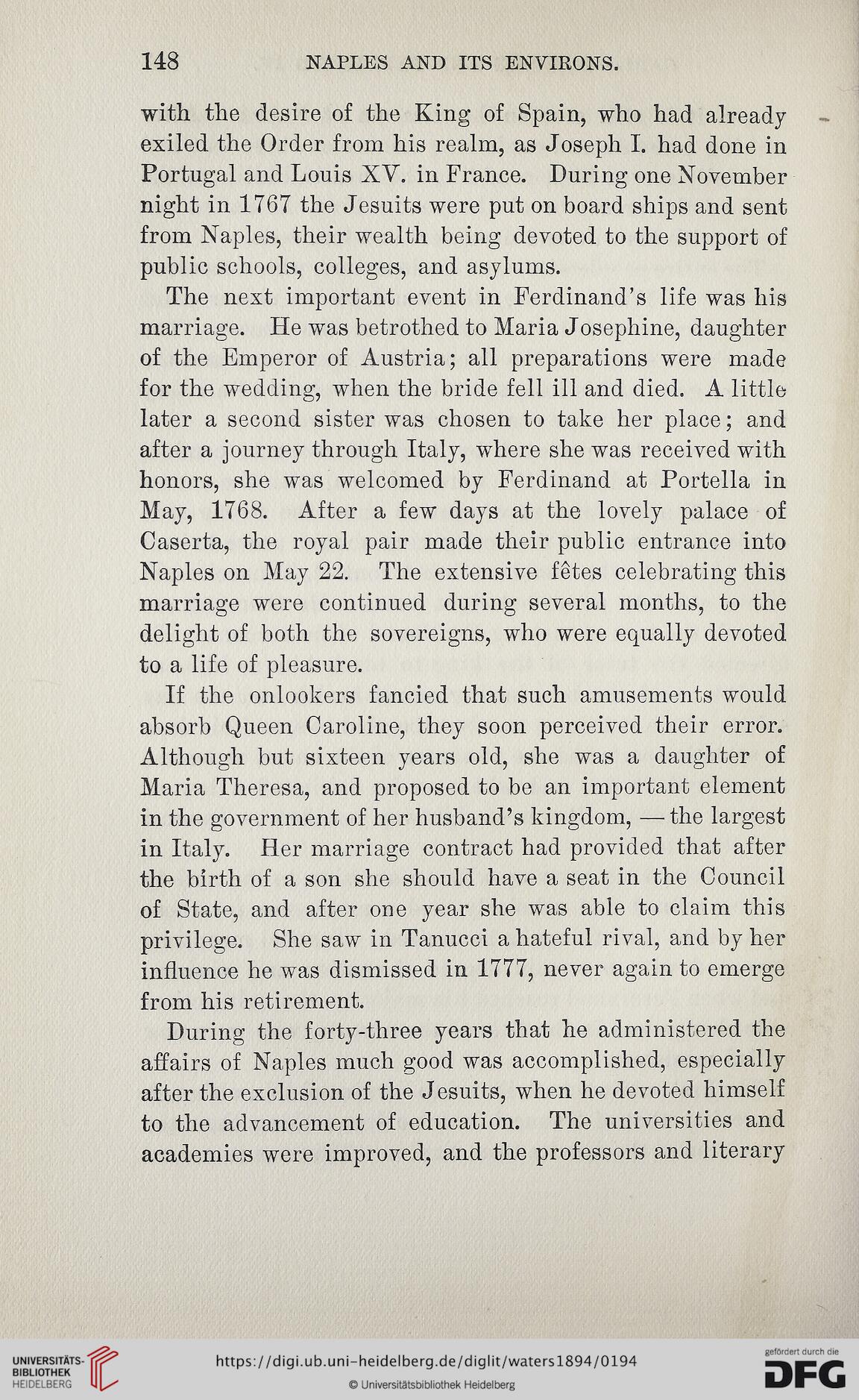148
NAPLES AND ITS ENVIRONS.
with the desire of the King of Spain, who had already
exiled the Order from his realm, as Joseph I. had done in
Portugal and Louis XV. in France. During one November
night in 1767 the Jesuits were put on board ships and sent
from Naples, their wealth being devoted to the support of
public schools, colleges, and asylums.
The next important event in Ferdinand’s life was his
marriage. He was betrothed to Maria Josephine, daughter
of the Emperor of Austria; all preparations were made
for the wedding, when the bride fell ill and died. A little
later a second sister was chosen to take her place; and
after a journey through Italy, where she was received with
honors, she was welcomed by Ferdinand at Portella in
May, 1768. After a few days at the lovely palace of
Caserta, the royal pair made their public entrance into
Naples on May 22. The extensive fetes celebrating this
marriage were continued during several months, to the
delight of both the sovereigns, who were equally devoted
to a life of pleasure.
If the onlookers fancied that such amusements would
absorb Queen Caroline, they soon perceived their error.
Although but sixteen years old, she was a daughter of
Maria Theresa, and proposed to be an important element
in the government of her husband’s kingdom, — the largest
in Italy. Her marriage contract had provided that after
the birth of a son she should have a seat in the Council
of State, and after one year she was able to claim this
privilege. She saw in Tanucci a hateful rival, and by her
influence he was dismissed in 1777, never again to emerge
from his retirement.
During the forty-three years that he administered the
affairs of Naples much good was accomplished, especially
after the exclusion of the Jesuits, when he devoted himself
to the advancement of education. The universities and
academies were improved, and the professors and literary
NAPLES AND ITS ENVIRONS.
with the desire of the King of Spain, who had already
exiled the Order from his realm, as Joseph I. had done in
Portugal and Louis XV. in France. During one November
night in 1767 the Jesuits were put on board ships and sent
from Naples, their wealth being devoted to the support of
public schools, colleges, and asylums.
The next important event in Ferdinand’s life was his
marriage. He was betrothed to Maria Josephine, daughter
of the Emperor of Austria; all preparations were made
for the wedding, when the bride fell ill and died. A little
later a second sister was chosen to take her place; and
after a journey through Italy, where she was received with
honors, she was welcomed by Ferdinand at Portella in
May, 1768. After a few days at the lovely palace of
Caserta, the royal pair made their public entrance into
Naples on May 22. The extensive fetes celebrating this
marriage were continued during several months, to the
delight of both the sovereigns, who were equally devoted
to a life of pleasure.
If the onlookers fancied that such amusements would
absorb Queen Caroline, they soon perceived their error.
Although but sixteen years old, she was a daughter of
Maria Theresa, and proposed to be an important element
in the government of her husband’s kingdom, — the largest
in Italy. Her marriage contract had provided that after
the birth of a son she should have a seat in the Council
of State, and after one year she was able to claim this
privilege. She saw in Tanucci a hateful rival, and by her
influence he was dismissed in 1777, never again to emerge
from his retirement.
During the forty-three years that he administered the
affairs of Naples much good was accomplished, especially
after the exclusion of the Jesuits, when he devoted himself
to the advancement of education. The universities and
academies were improved, and the professors and literary




